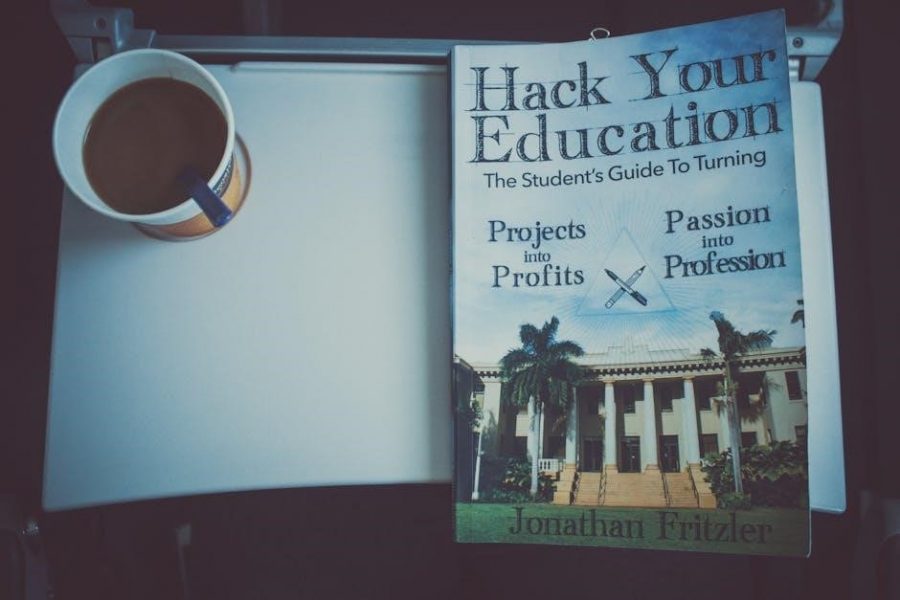Guided Reading is a dynamic teaching method where students engage in small-group reading instruction tailored to their reading levels and needs. In “The Next Step Forward in Guided Reading,” Jan Richardson emphasizes intentional, explicit instruction through targeted assessments and data-driven decisions to support student growth.
1.1 What is Guided Reading?
Guided Reading is an instructional approach where teachers work with small groups of students to provide tailored reading support. It involves explicit teaching, strategic interventions, and the use of leveled texts to match students’ reading abilities. This structured method fosters reading fluency, comprehension, and confidence, aligning with Jan Richardson’s framework for differentiated instruction and targeted skill development.
1.2 The Importance of Guided Reading in Modern Education
Guided Reading plays a pivotal role in modern education by addressing diverse student needs through personalized instruction. It bridges the gap between instruction and independent reading, fostering literacy skills and a love for reading. Jan Richardson’s approach highlights its significance in developing readers who are confident, fluent, and capable of critical thinking, essential for academic success and lifelong learning.

The Evolution of Guided Reading Practices
Guided Reading has evolved from traditional methods to personalized, data-driven instruction, with Jan Richardson’s framework emphasizing assessment and tailored teaching to meet diverse student needs effectively.
2.1 Historical Development of Guided Reading
Guided Reading traces its roots to the 1980s, evolving from “instructional-level reading” concepts. Initially focused on matching students to texts at their reading level, it gained prominence through researchers like David Pearson. Over time, it expanded to include small-group instruction, differentiated teaching, and a focus on comprehension strategies, laying the groundwork for modern frameworks like Jan Richardson’s structured approach.
2;2 How Guided Reading Has Adapted to Meet Contemporary Educational Needs
Guided Reading has evolved to integrate technology, data-driven instruction, and differentiated teaching. Modern frameworks like Jan Richardson’s Assess, Decide, Guide approach emphasize targeted assessments and flexible grouping, addressing diverse student needs. The use of digital tools enhances engagement, while explicit instruction ensures comprehensible texts, making it a responsive and effective method for today’s classrooms.

Jan Richardson’s Approach to Guided Reading
Jan Richardson’s framework, outlined in “The Next Step Forward in Guided Reading,” emphasizes targeted assessments, data-driven instruction, and structured lessons to support teacher planning and student progress.
3.1 Overview of “The Next Step Forward in Guided Reading”
In “The Next Step Forward in Guided Reading,” Jan Richardson provides a comprehensive guide to implementing effective guided reading lessons. The book offers detailed lesson plans, instructional tools, and strategies for teachers to support students at all reading levels. Richardson’s framework emphasizes targeted assessments, data-driven instruction, and explicit teaching to foster independence and growth in readers. It serves as a valuable resource for educators seeking to enhance their guided reading practices.
3.2 The Assess, Decide, Guide Framework
Jan Richardson’s Assess, Decide, Guide framework is a structured approach to guided reading. It begins with assessing students’ reading levels and needs, then deciding on targeted strategies, and finally guiding instruction to support growth. This framework ensures personalized learning, helping teachers systematically address skills gaps and foster independence in readers through intentional, data-driven instruction.
Key Components of an Effective Guided Reading Lesson
Effective guided reading lessons involve targeted assessments to identify skill gaps, data analysis to inform instruction, and explicit teaching to address diverse student needs and promote growth.
4.1 Targeted Assessments and Data Analysis
In “The Next Step Forward in Guided Reading,” Jan Richardson emphasizes the importance of targeted assessments to identify skill gaps and monitor progress. These assessments provide actionable data, enabling teachers to tailor instruction and make informed decisions. By analyzing this data, educators can pinpoint specific strategies to address individual and group needs, ensuring a personalized approach to reading development.
4.2 Pinpointing Specific Strategies for Student Growth
Using data from assessments, teachers can identify precise strategies to address skill gaps, ensuring targeted support for each student. Jan Richardson’s framework emphasizes matching strategies to student needs, such as decoding, fluency, or comprehension. This systematic approach ensures that instruction is purposeful and aligned with individual and group reading goals, fostering meaningful growth and improved reading proficiency.

Building Independence in Readers
Structured lessons in guided reading foster independence by gradually transferring responsibility to students. Techniques like read-alouds, shared reading, and independent reading empower students to become self-sufficient readers.
5.1 Fostering Independence Through Structured Lessons
Structured lessons in guided reading play a pivotal role in fostering independence. Jan Richardson emphasizes the importance of intentional instruction, gradually releasing responsibility to students; By integrating read-alouds, shared reading, and independent reading, teachers provide targeted support, enabling students to develop confidence and self-reliance in their reading abilities, ultimately becoming independent readers.
5.2 The Role of Read-Alouds, Shared Reading, and Independent Reading
Read-alouds, shared reading, and independent reading are essential components in guided reading. Read-alouds model fluency and comprehension, while shared reading engages students in collaborative learning. Independent reading allows students to apply skills independently, fostering confidence and self-reliance. Together, these practices create a balanced approach that supports students’ progression from dependence to independence in reading, as outlined in Jan Richardson’s framework.

The Role of Technology in Guided Reading
Technology enhances guided reading by providing digital tools and educational software that support interactive learning, personalized instruction, and engagement, making reading instruction more accessible and effective for students.
6.1 Digital Tools for Enhancing Guided Reading Experiences
Digital tools like e-readers, educational apps, and interactive platforms enrich guided reading by offering personalized learning experiences, real-time feedback, and engaging content. These tools allow teachers to track progress, differentiate instruction, and provide immediate support, fostering a more dynamic and effective learning environment for students of all skill levels.
6.2 Using Educational Software to Support Reading Instruction
Educational software complements guided reading by offering tailored resources, interactive activities, and data-driven insights. Programs like Reading A-Z and Literacy Footprints provide leveled texts, audio support, and progress tracking, enabling teachers to deliver targeted instruction and monitor student growth effectively, while enhancing engagement and independence in young readers.

Differentiated Instruction in Guided Reading
Guided reading thrives on differentiation, where teachers adapt instruction to meet diverse student needs. Jan Richardson’s framework emphasizes assessing each reader’s strengths and challenges to tailor strategies, ensuring personalized growth and engagement for all learners.
7.1 Tailoring Lessons to Meet Diverse Student Needs
Richardson’s approach emphasizes tailoring lessons to address diverse student needs. Teachers use assessments to identify specific reading challenges and adapt instruction accordingly. This includes modifying texts, teaching strategies, and scaffolding techniques to ensure each student receives targeted support. By focusing on individual learning gaps, educators create a personalized learning experience that fosters growth and confidence in readers of all levels.
7.2 Using the Assessment Summary Chart to Guide Instruction
The Assessment Summary Chart is a pivotal tool in Richardson’s framework, enabling teachers to systematically track student progress and identify skill gaps. By categorizing data on reading behaviors, the chart helps educators prioritize instructional strategies, ensuring targeted support for each learner. This structured approach allows for data-driven decision-making, enhancing the effectiveness of guided reading lessons and promoting measurable student growth over time.
The Impact of Guided Reading on Student Outcomes
Guided Reading significantly enhances reading fluency, sight word recognition, and comprehension skills, fostering a positive attitude toward reading and preparing students for independent literacy success.
8.1 Improving Reading Fluency and Sight Word Recognition
Guided Reading, as outlined in “The Next Step Forward,” enhances fluency by providing opportunities for repeated reading and explicit instruction. Richardson’s framework emphasizes sight word recognition through targeted practice and embedded instruction, ensuring students develop automaticity and accuracy. This approach leads to measurable improvements in decoding and reading speed, fostering confident and proficient readers.
8.2 Enhancing Students’ Attitudes Toward Reading
Guided Reading fosters a positive attitude toward reading by empowering students with choice and ownership. Richardson’s approach emphasizes creating a supportive environment where students feel confident and motivated. By celebrating progress and fostering a growth mindset, Guided Reading helps students view reading as a source of enjoyment and personal growth, leading to lifelong literacy appreciation and engagement.

Practical Strategies for Teachers
Jan Richardson provides actionable strategies for teachers, including assessment-informed instruction, explicit teaching of reading strategies, and scaffolded support to build student independence and confidence in reading.
9.1 Lesson Planning and Instructional Tools
In “The Next Step Forward in Guided Reading,” Jan Richardson offers detailed lesson plans and instructional tools, such as the Assess, Decide, Guide framework, to help teachers create structured, differentiated lessons. These tools support teachers in tailoring instruction to meet the diverse needs of their students, ensuring effective and engaging reading experiences for all learners at every level.
9.2 Integrating Intervention Strategies for Struggling Readers
Richardson provides evidence-based intervention strategies within her Assess, Decide, Guide framework to support struggling readers. These strategies include targeted skill lessons, scaffolded support, and explicit instruction, ensuring teachers can address specific deficits and accelerate progress for students who need additional support, thereby fostering confidence and independence in reading abilities effectively.

The Role of Parents and Guardians in Guided Reading
Parents and guardians play a vital role in reinforcing guided reading skills at home, fostering a love for reading, and collaborating with teachers to support their child’s literacy development.
10.1 Engaging Parents in the Guided Reading Process
Engaging parents in guided reading involves clear communication and providing resources to support their child’s literacy journey. Jan Richardson’s framework emphasizes sharing progress, offering strategies for home practice, and encouraging parents to read alongside their children. Regular updates and accessible tools, such as reading logs and discussion guides, empower parents to reinforce skills and foster a love for reading.
10.2 Strategies for Reinforcing Reading Skills at Home
Parents can reinforce reading skills by creating a structured reading routine, using discussion guides, and providing access to leveled texts. Encouraging daily reading practice, modeling fluent reading, and engaging in interactive discussions fosters a deeper understanding. Tools like reading logs and strategy cards help track progress and apply classroom strategies at home, ensuring consistent skill development and a lifelong love for reading.

Sustaining Guided Reading Programs
Sustaining guided reading programs requires a culture of reading, ongoing professional development, and consistent use of effective resources to ensure long-term student success and engagement.
11.1 Building a School-Wide Culture of Reading
Building a school-wide culture of reading involves fostering a shared commitment to literacy across all grades and departments. Jan Richardson’s framework emphasizes creating a community where reading is valued and integrated into daily routines. This includes collaborative professional development, shared resources, and consistent strategies to ensure every student receives targeted support. Such a culture promotes accountability and collective success.
11.2 Professional Development for Teachers
Professional development is crucial for equipping teachers with the skills to implement guided reading effectively. Jan Richardson’s approach provides practical strategies and tools, enabling educators to design structured lessons and use assessment data to inform instruction. Ongoing training and collaboration among teachers ensure consistent, high-quality instruction, fostering a culture of continuous improvement and student growth.
Challenges and Solutions in Implementing Guided Reading
Teachers often face challenges like managing diverse reading levels and limited time. Jan Richardson’s framework provides structured solutions, ensuring personalized instruction and effective use of classroom resources.
12.1 Common Challenges Faced by Educators
Educators implementing guided reading often encounter challenges such as managing varied reading levels, limited instructional time, and assessing individual progress. Additionally, aligning lessons with curriculum standards and engaging all students can be difficult. Jan Richardson’s framework addresses these challenges by offering practical strategies and tools to ensure effective instruction and student engagement in guided reading settings.
12.2 Innovative Solutions for Overcoming Obstacles
Jan Richardson’s Assess, Decide, Guide framework offers innovative solutions to common challenges in guided reading. By leveraging differentiated instruction and technology integration, educators can personalize learning experiences. Richardson’s approach emphasizes targeted interventions, flexible grouping, and data-driven decision-making to address diverse needs. These strategies empower teachers to overcome obstacles, ensuring all students receive tailored support and achieve meaningful progress in their reading journey.
The Future of Guided Reading
Guided reading’s future lies in innovative, research-based practices like Jan Richardson’s framework, blending technology and personalized instruction to meet diverse learning needs effectively.
13.1 Emerging Trends in Reading Instruction
Emerging trends in reading instruction emphasize technology integration, personalized learning, and data-driven strategies. AI and machine learning tools now support differentiated instruction, offering tailored interventions. Jan Richardson’s framework aligns with these innovations, ensuring guided reading evolves to meet modern educational demands effectively.
13.2 The Role of AI and Machine Learning in Guided Reading
AI and machine learning are transforming guided reading by offering personalized learning experiences. Tools like adaptive text difficulty and real-time feedback enhance student engagement. Jan Richardson’s framework can be supported by AI-driven assessments, enabling teachers to identify student needs more efficiently. Virtual reading coaches and predictive analytics further tailor instruction, making guided reading more impactful and responsive to individual learners.

Case Studies and Success Stories
Jan Richardson’s framework has transformed reading instruction nationwide. Schools report significant improvements in reading fluency, comprehension, and student confidence due to her evidence-based strategies.
14.1 Real-World Examples of Successful Guided Reading Programs
Schools nationwide have seen transformative results using Jan Richardson’s framework. A district in California reported a 30% increase in reading proficiency, while a Texas elementary school improved fluency rates by 25%. These successes highlight how Richardson’s structured approach, including targeted assessments and strategic grouping, empowers teachers to meet diverse student needs effectively, fostering significant growth in reading abilities and confidence.
14.2 Insights from Teachers and Students
Teachers praise Richardson’s approach for its clarity and effectiveness, noting how it empowers them to tailor instruction to individual needs. Students report increased confidence in reading, attributing their growth to the structured, supportive nature of guided reading lessons. Educators highlight the Assess, Decide, Guide framework as a game-changer, enabling them to make data-driven decisions that foster meaningful progress in their students’ reading abilities and engagement.
Resources and References
The Next Step Forward in Guided Reading offers valuable resources, including recommended books, online tools, and educational communities, to support effective reading instruction and professional development.
15.1 Recommended Books and Articles on Guided Reading
The Next Step Forward in Guided Reading by Jan Richardson is a cornerstone resource, offering a comprehensive framework and practical tools for implementing guided reading. Additional recommended books include The Reading Strategies Book by Jennifer Serravallo and Guided Reading: Good First Teaching for All Students by Irene Fountas and Gay Su Pinnell. These texts provide detailed lesson plans, assessment strategies, and research-based techniques. Online articles and educational journals also offer insights into differentiated instruction and technology integration, supporting educators in refining their guided reading practices. These resources are available on major online marketplaces, educational websites, and academic databases, ensuring accessibility for teachers worldwide.
15.2 Online Tools and Communities for Educators
Educators can access a variety of online tools and communities to enhance their guided reading practices. YouTube offers instructional videos and webinars, while educational forums like Edutopia and Teachers Pay Teachers provide lesson plans and resources. Digital libraries, such as Epic! and Reading A-Z, offer leveled texts, and progress-tracking software like Accelerated Reader supports data-driven instruction. These platforms foster collaboration and innovation, helping teachers refine their techniques and share best practices globally.
Guided Reading, as outlined in Jan Richardson’s approach, revolutionizes literacy instruction by focusing on intentional teaching and student-centered practices, ensuring lasting educational impact.
16.1 The Transformative Power of Guided Reading
Guided Reading, as detailed in Jan Richardson’s “The Next Step Forward,” has transformed literacy education by providing teachers with practical tools and strategies to meet diverse student needs. By focusing on targeted assessments and intentional instruction, this approach fosters independence, improves fluency, and enhances students’ confidence in reading, leading to measurable academic growth and a lifelong love for reading.
16.2 Moving Forward with Evidence-Based Practices
Jan Richardson’s framework in “The Next Step Forward” emphasizes the importance of evidence-based practices to drive reading instruction. By leveraging targeted assessments and data analysis, educators can refine their strategies, ensuring interventions are impactful. Professional development and a commitment to continuous improvement are essential for sustaining effective guided reading programs, ultimately leading to improved student outcomes and a stronger foundation for future literacy success.
